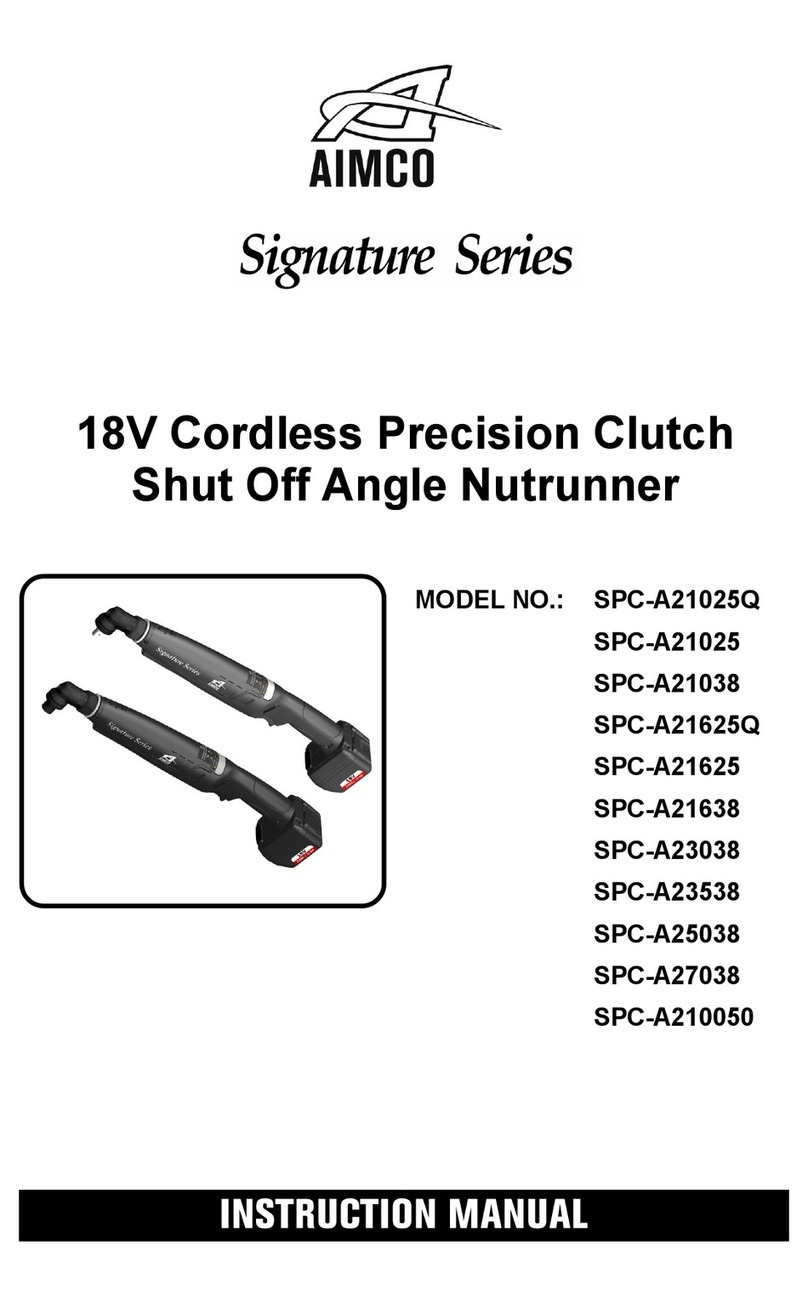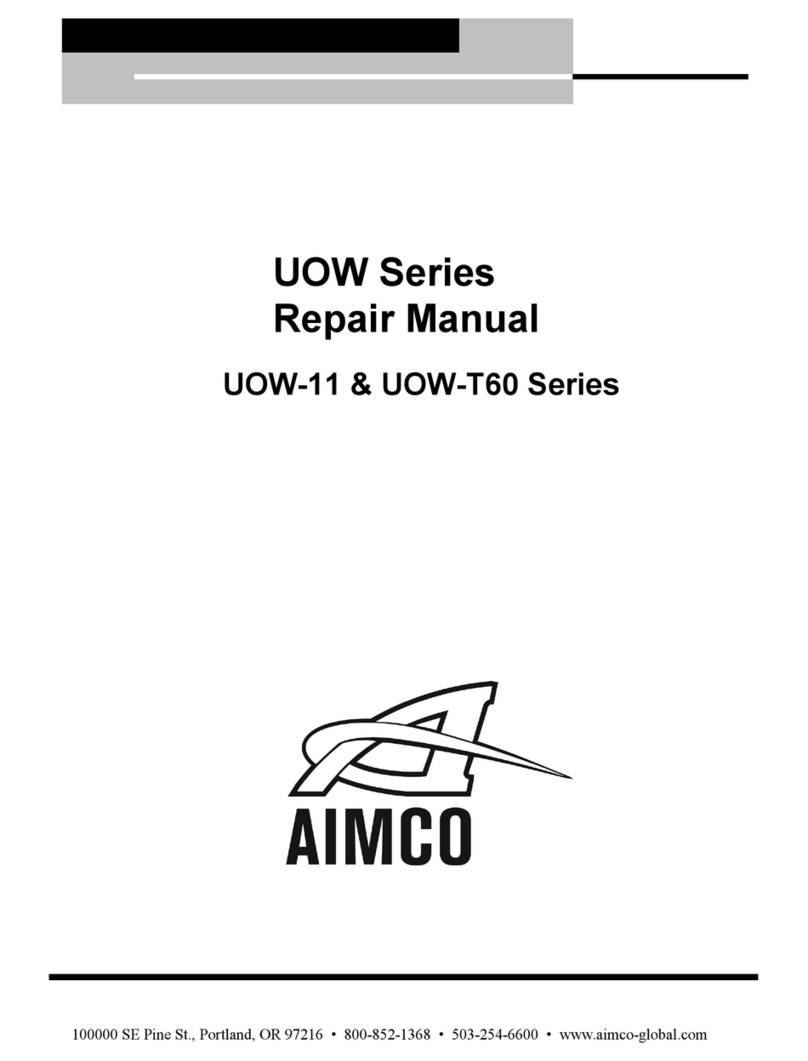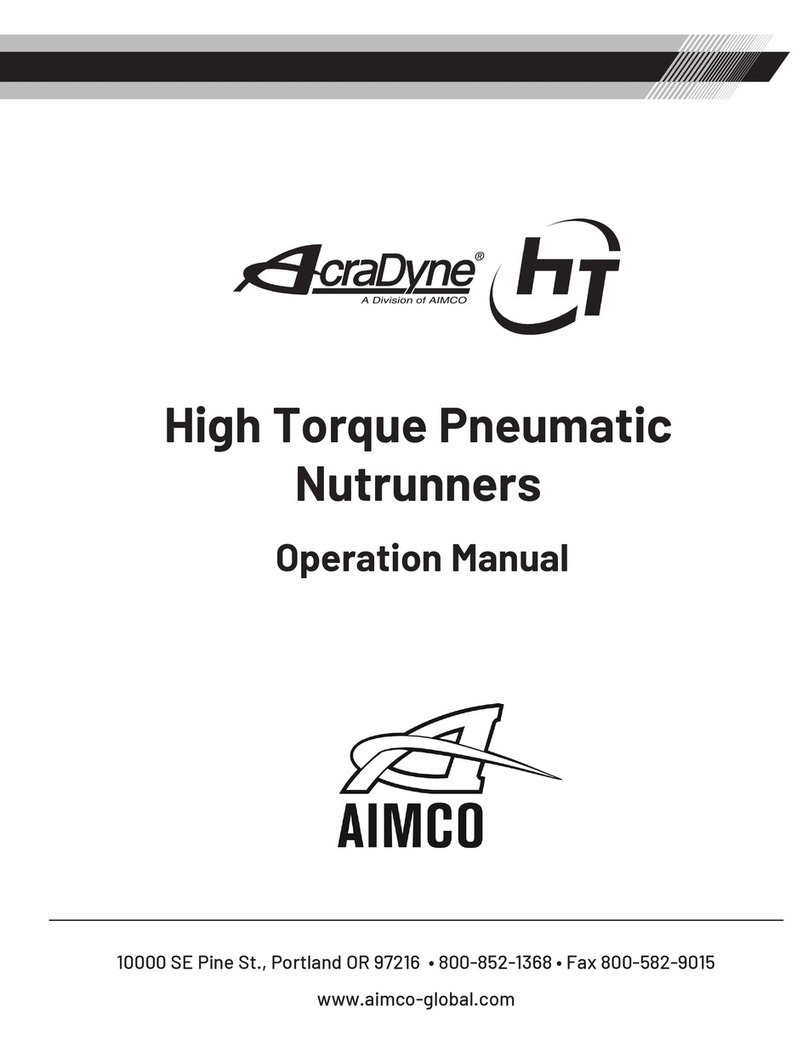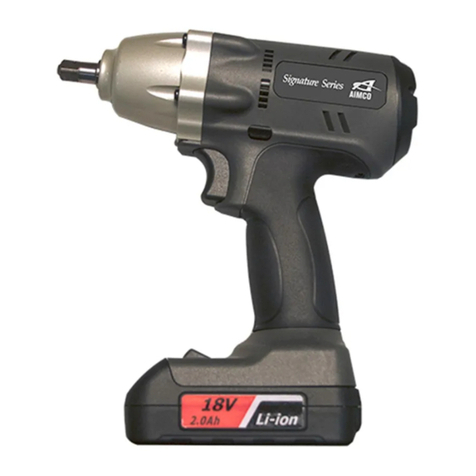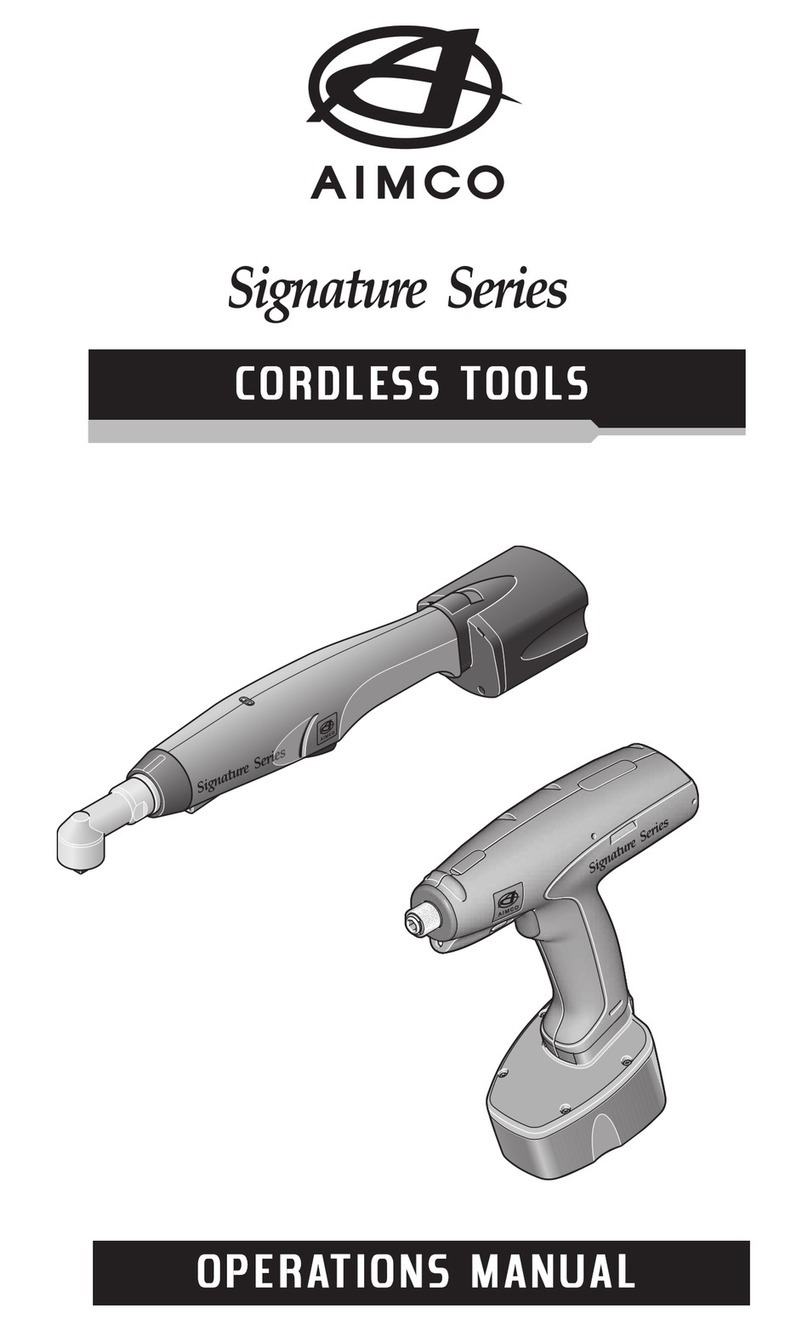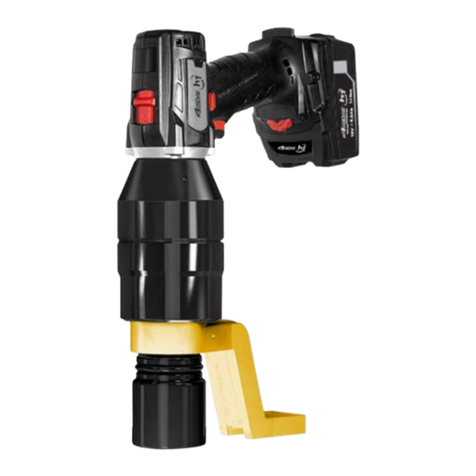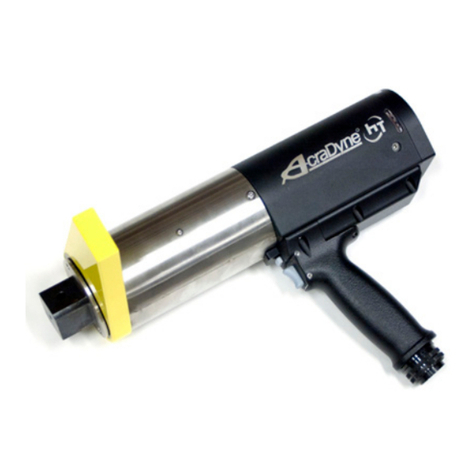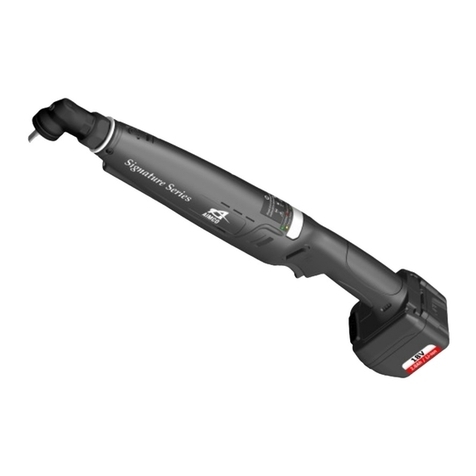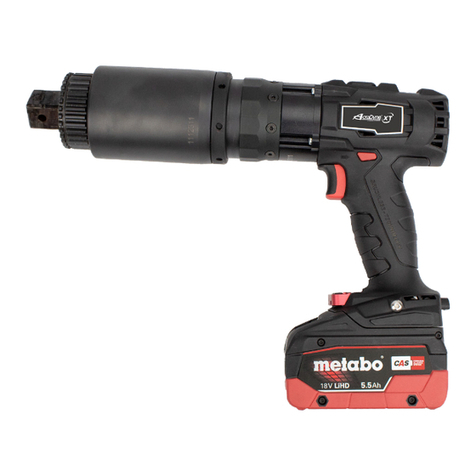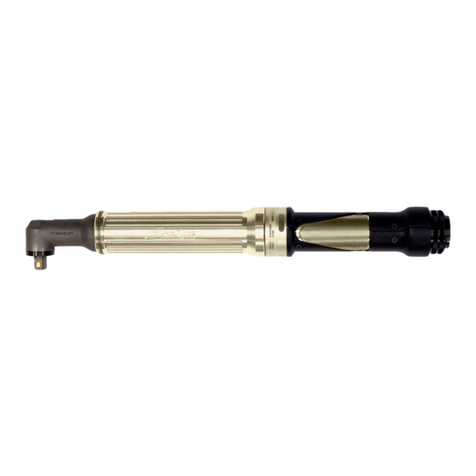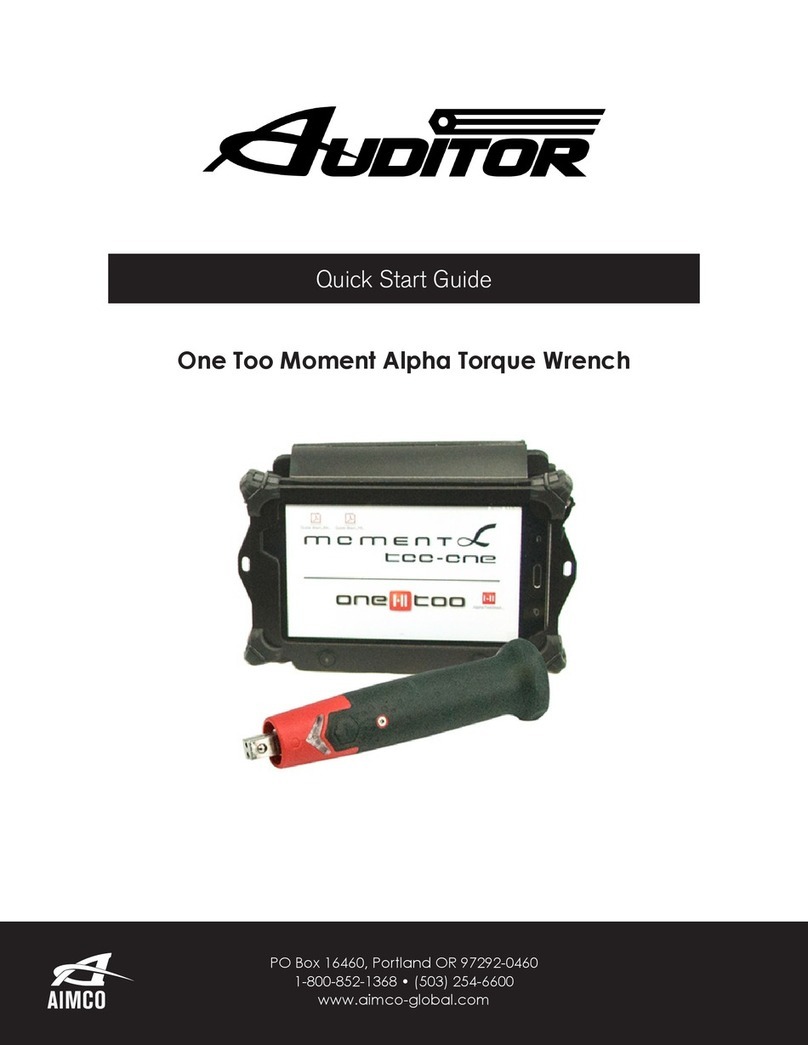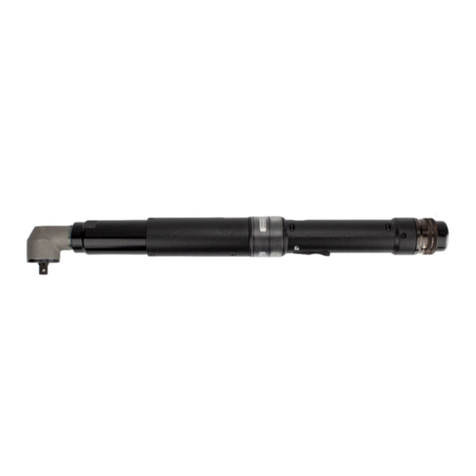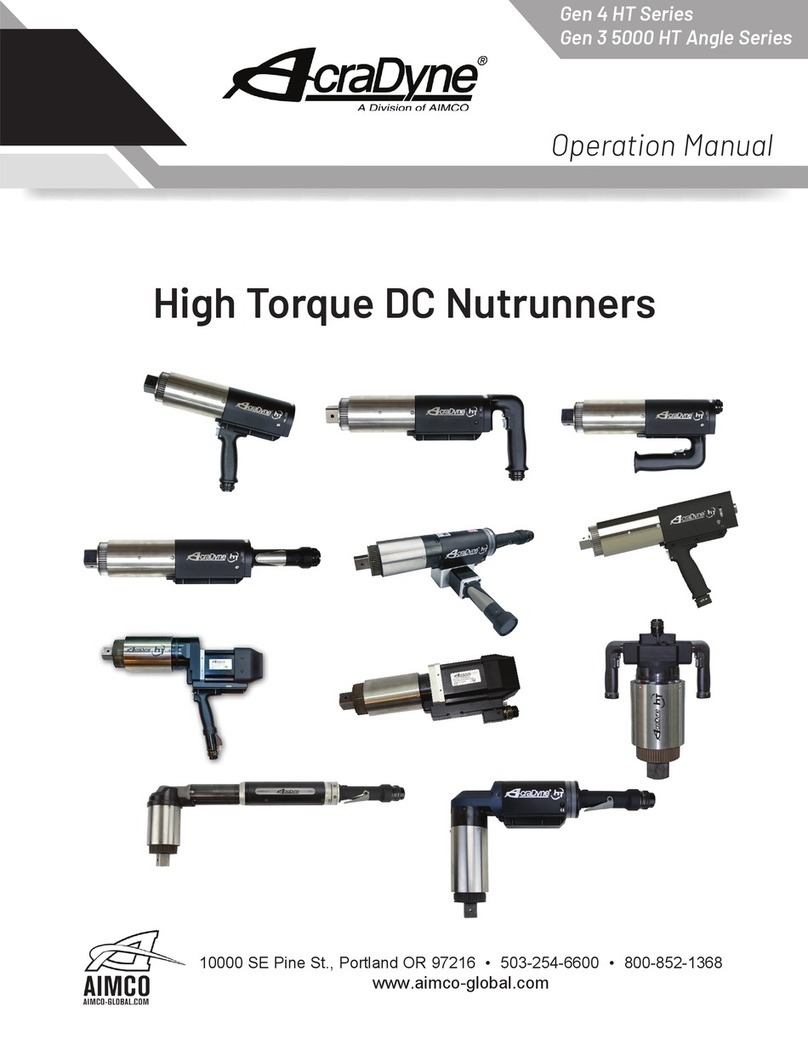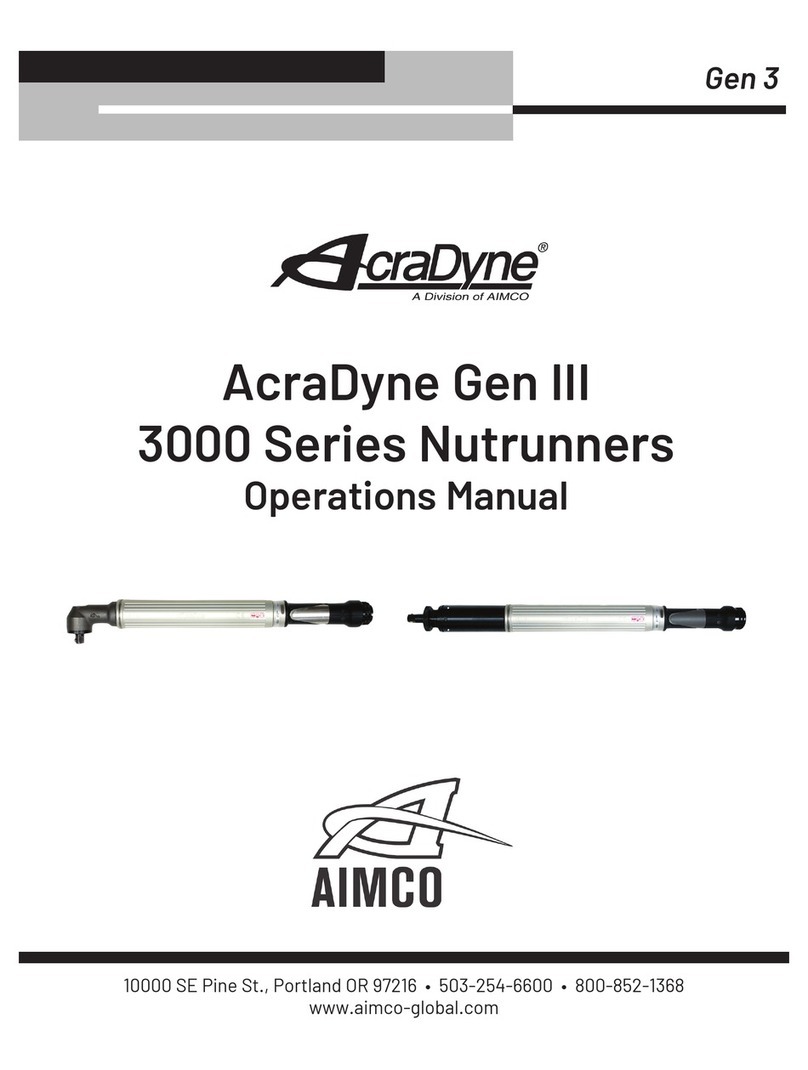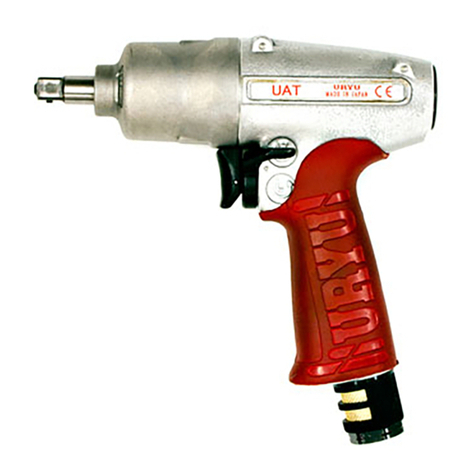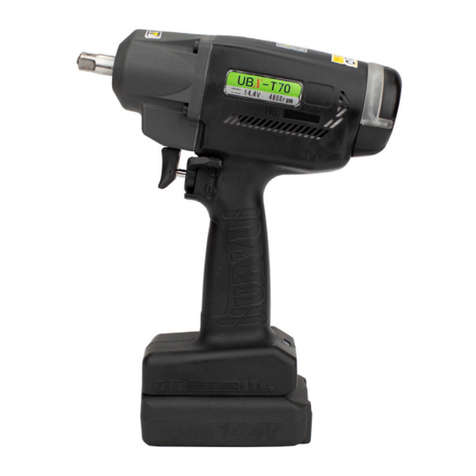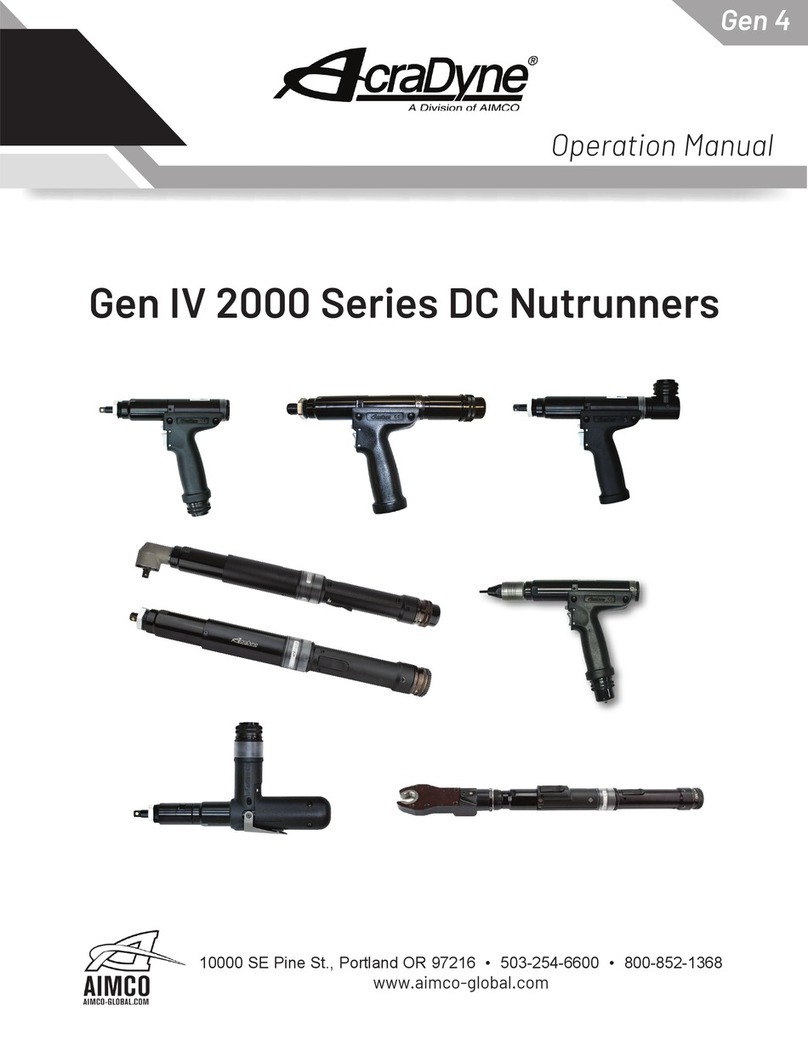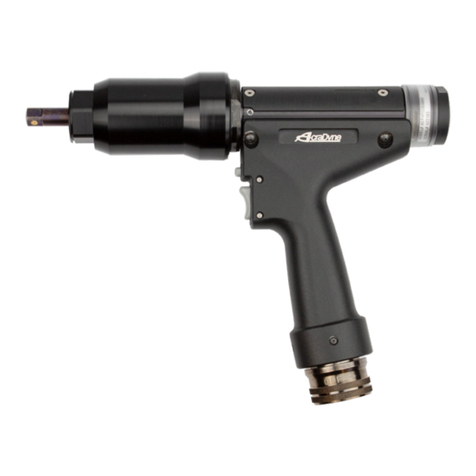
3
Phoenix II/Phoenix III Torque Wrench User Manual
manufacturer. Doing so may decrease the safety of
the product and reduce its performance, life, or cause
product failure.
• To change accessories, follow the instruction manual.
• Do not disassemble or modify the product or accessories.
Doing so will decrease the safety of the product and
reduce its performance, life, or cause product failure.
1.3 Tool Usage and Workplace Condition
• Use a natural and steady posture when using the tool.
• Keepyourfeetrnlyonthegroundandmaintainyour
balance. Pay attention to the condition of your workplace.
• Keep the workplace brightly lit. Working in a a poorly lit
place may lead to an accident.
• Always keep the workplace clean and uncluttered. An
untidy workplace may lead to accidents.
• Keep the tool and its handle dry and clean. Oil and grease
may make a handle slippery and cause accidents and
injury.
• Choose the correct tool for the required operation.
• Before use, check the case and other parts to make sure
they are functioning properly. Check everything that may
affect ordinary operation.
• For best measurement accuracy, hold the center of the
handle length and apply force at a right angle in relation
to the wrench length.
• Connect the torque wrench and the interchangeable
headrmly.
• When working in a high place, take appropriate measures
to prevent the product and its accessories from falling.
Falling tools or sockets may cause accidents, injuries and/
or product failures.
• Keep other people away from the workplace. A crowded
workplace may lead to accidents.
• Make sure the ratchet lever is completely switched to the
direction your application requires. Failure to do so may
cause accident and/or injuries.
• Do not extend the handle of the torque wrench with a pipe,
etc. This will cause an accuracy error and may damage
the equipment and cause an accident.
• Keep tool away from small children. They don’t know how
to use wrenches.
• When not in use, store tool properly, keep it dry, and lock it
so unauthorized persons cannot use it.
• Do not allow the operating temperature of the tool to
rise as high as 60 °C (140 °F). Doing so may damage the
battery, hinder product performance, and cause smoke
and/or re.
• Do not use the product beyond its capacity. In order to use
the product safely, effectively, and to extend its life, use
it always within its capacity. Using the product beyond its
capacity may cause accidents or product failure.
• Do not use the product for purposes other than intended.
Use it only for what is specically designated in this
manual. Doing otherwise so may cause an accident.
• Take good care of all tools.
1. General Power Tool Safety Warnings
WARNING
Read all safety warnings, instructions, illustrations, and
specications provided with this power tool. Failure to follow
all instructions listed below may result in electric shock, re,
and/or serious injury. Save all warnings and instructions for
future reference.
1.1 Battery and Charger
• Useonlytheofcialchargerandbattery.Do not use any
other chargers or batteries not designated in this manual.
• Use the correct charger rated to the power source. Failure
to do so may damage the charger and equipment and
cause abnormal heat generation, which may result in re.
• Do not use the charger with a damaged plug or
damaged cable. Doing so may cause an electric shock,
short-circuit, and/or a re.
• Do not charge the battery in conditions outside of the
–1 to 42 °C (30 to 107 °F) temperature range.
• Do not wrap the charger or battery with a cloth, etc. This
may hinder heat dissipation and, in an extreme case,
may cause a re.
• When it is not in use, remove the plug from the power
source. This will prevent damage in cases such as if the
line voltage swings outside the accepted values.
• Do not use the charger or store the battery in the rain or
other wet conditions. Do not use a charger or battery that
was exposed to water. This will damage the products and
may lead to electrical shock.
• Do not use or charge the product in an area near
ammableliquidorgas.
• Donotthrowthebatteryintoare.It will explode and
may generate hazardous gases.
• Do not handle the charger cable roughly. Do not carry
the tool by the charging cable. When pulling out the
plug, handle it by the connector and not by the cable.
• Carefully choose the charging location so that the cable
is not subject to any external damage. A damaged
cable may cause an electric shock and/or re.
• Keep the charge cable away from heat, oil, and sharp
corners. Avoid physical damage to the cable.
• When charging via USB, use the cable supplied with the
product or one from a reliable source that complies with
the USB standard. Certify that the USB port also complies
with the USB industry standard.
• Immediately replace damaged cables. Check the cable
of the charger periodically. Working with a damaged
cable may cause an electric shock and/or a re.
• When using an extension cord, conduct a periodic check
and change with a new one if there is any damage.
1.2 Accessories
• Use only authorized accessories and optional equipment.
Do not use any accessories or optional equipment other
than those designated in this manual or advised by the
